Operation: Dortmund
Date: 20/21 February 1945 (Tuesday/Wednesday)
Unit: No. 625 Squadron
Type: Lancaster I
Serial: NG267
Code: CF-Y
Base: RAF Kelstern, Lincolnshire
Location: Hagen Stadtwald
Pilot: F/O William Patrick Maloney DFC J29566 RCAF Age 21 - Killed (1)
Fl/Eng: P/O William George Pearce 185421 RAFVR Age 30 - Killed (2)
Nav: F/O George Harry Percival Shephard J38734 RCAF Age 22 - Missing believed killed (3)
Air/Bmr: F/O Henry Raymond Dart J37816 RCAF Age 20 - Missing believed killed (4)
W/Op/Air/Gnr: W/O II John Arthur Dickson R190510 RCAF Age 22 - Missing believed killed (5)
Air/Gnr: P/O Briar Sibbald Thompson J93899 RCAF Age 21 - Killed (6)
Air/Gnr: F/Sgt Oliver Harding R203699 RCAF Age 20 - Killed (7)
INTRODUCTION
F/O Maloney and his intact crew arrived at RAF Kelstern from No. 11 Base, on 29 September 1944 to start their tour of operations.
After a two week period to acclimatize to the hypnotic pace of an operational station, it was time for the Maloney crew to be introduced to the grim reality of Bomber Command attacks over Occupied Europe. They would have the unique experience of tasting raw adrenaline twice in one day by participating in the double-header to Duisburg on 14 October 1944 with a day raid followed by a night attack!
F/Lt J.M. Wilson would pilot Lanc LM731 with his navigator, F/O G.S. Cozens-Hardy and rear gunner, Sgt. J.A.D Ross. The remainder of the crew included F/O Maloney as 'second dickie', Sgt. Pearce, flight engineer, P/O Dart, bomb aimer, Sgt. Dickson, wireless operator and Sgt. Harding, mid-upper gunner. They departed Kelstern at 06.25, ninth of thirty-one aircraft, and would have been circling in the climb to cross midfield for a set course time. At 06.28 and eleventh in line, F/O Hannah in LL956 would follow in their slipstream for an abbreviated flight that would last six minutes! This eight man crew included a mix of his and Sgt. Paige’s, also on his ‘second dickie’ trip. An engine fire before lift-off would doom this flight, but not before F/O Hannah clawed for sufficient altitude to enable six of the crew to successfully bale out. Sadly, F/O Hannah and rookie bomb aimer, F/Sgt. Bennett, would lose their lives ( LL956) . It is quite likely that F/O Maloney and his crew would have had ringside seats to the demise of LL956, driving home the risk of the tasks at hand.
Fortunately their mission to Duisburg was uneventful and they touched down at Base at 10.57, after a trip of 4 hours, 32 minutes. However, their day was far from over.
On the previous day, Sir Arthur Harris had received the directive for Operation Hurricane: ‘In order to demonstrate to the enemy in Germany generally the overwhelming superiority of the Allied Air Forces in this theatre... the intention is to apply within the shortest practical period the maximum effort of the Royal Air Force Bomber Command and the VIIIth United States Bomber Command against objectives in the densely populated Ruhr.’
With this edict in mind the second Battle Order for October 14, 1944 detailed a repeat attack on Duisburg, two pronged, two hours apart, targeting separate aiming points in the north and south areas of the city.
Two pilots of 625 Squadron who had just flown their ‘second dickie’ trips on the first raid found their names on the Battle Order for the second one, F/O Maloney and P/O Crooks. This gives true meaning to the term ‘Maximum Effort’ and would prove to be the ultimate baptism under fire for these two crews.
One can only imagine the incredible challenge that the preparation for the second raid would have presented the ground crew in inspecting, repairing, bombing up and refuelling the twenty-nine Lancs that would participate. Not to mention the route planning and briefing of the exhausted, sleep deprived crews that had just flown the first raid!
With this in mind, F/O Maloney and his intact crew would lift off Kelstern’s runway into the inky night at 22.44, a mere 11 hours and 27 minutes since they had returned from their first Duisburg op. For navigator, F/O Shepherd and mid-upper gunner, Sgt. Thompson, this would be their first exposure to operational flying. After an uneventful trip they would return to Base at 03.50, fully initiated, to a most deserved breakfast and sleep.
Remarkably the only loss for 625 Squadron from the sixty aircraft and crews dispatched on the two Duisburg raids, was LL956 with F/O Hannah and Sgt. Bennett. On the other hand the damage inflicted on Duisburg was devastating:
‘Heavy casualties must be expected. Very serious property damage. A large number of people buried. Thyssen Mines III and IV: About 8 days loss of production. Duisburg-Hamborn: All mines and coke ovens lay silent.’ (Bomber Commands War Diaries)
After a well deserved break to absorb lessons learned, F/O Maloney and crew would have a quiet day trip to Essen on October 25, 1944. F/Sgt. T. Jones would serve as substitute wireless operator.
The Battle Order for October 28 would detail the intact crew to attack Cologne on another day op. The Squadron ORB would indicate that this trip was eventful for the crew:
COLOGNE. Target bombed at 16.00 hours from a height of 16,100 feet just to Port Red flare. Slight flak damage in Starboard fin and Starboard Wing tip.
F/O Maloney and crew would return to Cologne for night raids on October 30th and 31st, returning unscathed.
November 1944 was a busy month for this crew with a total of eight missions to expand their combat experience and solidify their teamwork and co-operation. This would include a combination of day and night ops.
On 2 and 4 November, the Maloney crew would have quiet night ops to Dusseldorf and Bochum. These were followed by day attacks on Gelsenkirchen and Wanne Eickel on 6 and 9 November, returning to Kelstern unscathed. It would appear that their next two trips would be broken up with their first taste of leave. On 11 November they made their first night visit to Dortmund and on the 21st a nocturnal op to Aschaffenburg, both without surprises.
Almost without exception, all airmen of Bomber Command tended to suffer from their fair share of superstitions and talismans. At the top of the list was triskaidekaphobia (extreme superstition regarding the number thirteen). Unfortunately, in order to complete a tour of thirty ops, they all had to withstand the torture of Op No. 13. Superstition dictated that to survive this critical operation, there had to be a minimum of diversion from the norm. For their thirteenth op on 27 November, F/O Maloney along with his trusted navigator, F/O Shepherd and rear gunner, F/Sgt. Harding were detailed for a night attack on Freiberg, and in the process introduce F/O K.W. Houghton and four of his crew to his ‘second dickie’ experience. After a successful moonlight excursion, skirting the Swiss Frontier, they returned safely to fight another day — the jinx was broken!
The Battle Order for November 29th detailed F/O Maloney and crew for a day attack on Dortmund. Their mount for this op being NG267, a portent of future events. However, this proved to be a quiet trip.
December 1944 would see F/O Maloney add four further operations to his tally and the remainder of his crew, three.
On 3 December they made a rather unusual day visit to the Urft Dam:
07.30-12.29 URFT DAM. Returned to Base with full bomb load on M/Bomber instructions.
Squadron ORB:
The task was abandoned over the target by the Master Bomber owing to cloud conditions. All aircraft returned to base and made successful landings in bad weather conditions, with the exception of “C” (Pilot, Flying Officer NAYLOR) which overshot on landing and went through a fence. None of the crew was injured.
On 4 and 6 December the crew would have uneventful trips to Karlsruhe and Merseberg-Luena respectively, with Sgt. F. Aldred as ‘spare bod’ in the rear turret, for the latter.
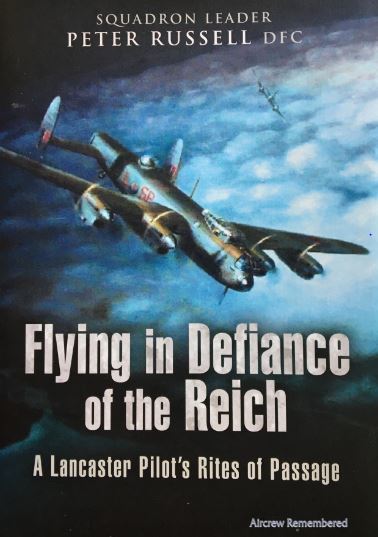 F/O Maloney’s eighteenth op, Target Essen, on 12 December would be rather unusual as he was the Pilot/Captain for the following crew: Sgt. W.P. Dunford, flight engineer; F/O K.N. Darley, air bomber; P/O Richardson, navigator; Sgt. R.C. Turner, wireless operator; F/O T.N. Large, mid-upper gunner and Sgt. F. Aldred, rear gunner. Interestingly there was no second pilot or any of F/O Maloney’s crew included, suggesting that the pilot of this crew was incapacitated due to an acute medical condition or psychological decompensation. One can only imagine the elevated anxiety levels on this mission due to the lack of familiarity and trust between pilot and crew and vice versa. It would have been fascinating to observe the pre-op briefing between the crew members and the crew bus ride to dispersals! F/O. Maloney's mount for this trip was PB158, not his usual NG267 and it would appear that he and his crew were rewarded with a period of leave to bring in the New Year.
F/O Maloney’s eighteenth op, Target Essen, on 12 December would be rather unusual as he was the Pilot/Captain for the following crew: Sgt. W.P. Dunford, flight engineer; F/O K.N. Darley, air bomber; P/O Richardson, navigator; Sgt. R.C. Turner, wireless operator; F/O T.N. Large, mid-upper gunner and Sgt. F. Aldred, rear gunner. Interestingly there was no second pilot or any of F/O Maloney’s crew included, suggesting that the pilot of this crew was incapacitated due to an acute medical condition or psychological decompensation. One can only imagine the elevated anxiety levels on this mission due to the lack of familiarity and trust between pilot and crew and vice versa. It would have been fascinating to observe the pre-op briefing between the crew members and the crew bus ride to dispersals! F/O. Maloney's mount for this trip was PB158, not his usual NG267 and it would appear that he and his crew were rewarded with a period of leave to bring in the New Year.
On review of the Squadron ORB it is apparent that five of the crew on the op of 12 December were regular members of S/L Peter Russell’s crew. On review of the text of his excellent book, ‘Flying in Defiance of the Reich- A Lancaster Pilot’s Rites of Passage’, it is noted that he did not fly any trips between that of 18/19 November to Wanne-Eickel and the one of 21/22 December to Bonn, suggesting that he suffered from a temporary medical ailment. S/L Russell would continue to have a stellar tour as the Flight Commander of “B” Flight. His book is well written and provides a vivid window into the ebb and flow of all aspects of life on a bustling operational base, Kelstern, from October 1944 through to wars end. A most worthwhile read.
1945
January would be a quiet month for the Maloney crew, being detailed for only four bombing attacks, all at night and in their trusty steed, NG267: Hanover, 5 January; Munich, 7 January; Merseberg-Luena, 14 January and Zeitz on 16 January.
The month of February would be significant for F/O Maloney and his highly experienced crew. It would include two quiet missions to Politz, in ND337, on 8 February and on Valentine’s Day, in their reliable NG267 to Chemnitz.
Their final op, the twenty-fifth for F/O Maloney and twenty-fourth for the remainder of the crew, involved a night attack on Dortmund. NG 267 was their trusty steed for their third visit to this city located in Germany’s North Rhine-Westphalia region. She did not let them down.
Squadron ORB
20.2.45 Lanc I NG267 F/O Maloney and Crew Up 21.22 DORTMUND. Failed to return, no news after take off.
It would be over two years past war’s end before the mystery of the loss of this experienced crew would be solved and closure brought to their grieving families.
20.2.45 BOMBING ATTACK ON DORTMUND
25 aircraft were detailed for operations, the target being DORTMUND. The mission was a very successful one and large fires could be seen 40 minutes after bombing. Intense H/F barrage was encountered over the target, but no S/L’s were able to penetrate. There was also fighter activity. One of our aircraft failed to return from this operation.
DETAILED 25 aircraft, PRIMARY 24 aircraft, ABORTIVE Nil, MISSING 1 aircraft
SUMMARY DIARY 16th Feb. - 23rd Feb.
20.2.45 OPERATIONS. 25 aircraft were detailed for an attack on a German target which was later changed to DORTMUND. This Ruhr target was again battered by 625. The weather was good on the way to the target but 10/10ths cloud covered the target area preventing the crews from seeing the T.I.’s burning on the ground. However the cloud cover was thin enough to see the glow of the T.I.’s through it and many crews bombed on the glow. Some Wanganui were also dropped. Heavy flak was fairly intense but Searchlights were unable to operate owing to the cloud. Fighters were active. Flying Officer Maloney in “Y” failed to return from this operation. Flying Officer Cooper, Bomb Aimer, with Flying Officer Jamieson’s crew in “M” was unfortunately killed by an explosive missile shortly after leaving the target. The rest of the crew returned to Base safely.
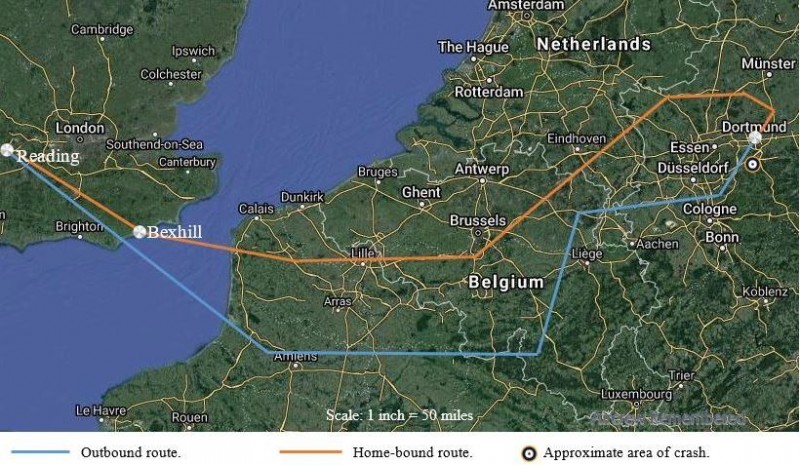
ROUTE
READING - 50°00N 02°00E - 50°00N 05°00E - 51°00N 05°30E - 51°07N 07°07E - TARGET - 51°40N 07°38E - 51°50N 07°20E - 51°30N 06°30E - 51°00N 05°20E - 50°20N 04°20E - 50°40N 02°20E - Bexhill - Reading
Apart from those aircrew killed and missing from the crews of the seventy-four Lancasters lost by 625 Squadron during the war, two more airmen lost their lives whilst the remainder of their respective crews and their aircraft returned safely to Kelstern, intact. They were 154093 F/O D.N.A. Cooper (Lancaster NG412) and A434217 F/Sgt F.P. Adams (Lancaster ND995)
THE CHOP
I am most grateful to Rod MacKenzie, co-author of the Nachtjagd War Diaries and pending Nachtjagd Combat Archives, for sharing his research on the loss of NG267:
'Unfortunately, the best I can state with regard to NG267 is that Flak or a night fighter likely brought the Lancaster down. The definitive records giving a cause of loss are the captured German documents held on the still-closed RAF P4(Cas) casualty files held by the British MoD. I only know NG267 is covered in the captured documents.
According to Luftwaffe records (and I don’t have the complete information available), 625 Squadron NG267 crashed in somewhere within the Hagener Stadtwald (this is a very large forest SW of Hagen, roughly bounded by Hagen, Hesert, Vörde, Waldbauer, and Selbecke).
Another bomber – 150 Squadron Lancaster PD421 – crashed nearby, in the Hinnenwiese forest near Im Kettelbach.
The British Final Graves Registration Form gives the crash location of NG267 as “Wood HAGEN-HASPE ON THE RUNGEL GERMANY”.
This location is north of the Stadtwald.'
Theo Boiten and Rod MacKenzie are in the process of publishing the expanded Nachtjagd Combat Archive (NCA), with a projected completion date of late 2021 to early 2022, comprising fifteen volumes. This includes two additional volumes on the Med and Eastern Front Nachtjagd.
This lifelong mega-project is eagerly anticipated by historical aviation enthusiasts. The trojan task of expanding the two volume Nachtjagd War Diaries into the fifteen volumes of the Nachtjagd Combat Archives has been monumental and painstaking, their research diligent and unbiased. They have both been most gracious with their time and energy in responding to our numerous queries in researching loss causes of numerous 625 Squadron Lancs and their crews.
It would not be until February 1947 before the No. 4 Missing Research and Enquiry Unit in the British Zone in Germany was in a position to carry out the investigations, retrieval and identification of the Bomber Command aircrew that had failed to return from the 20/21 February 1945 Dortmund raid. The dedicated RAF members of the MRES were unrelenting and meticulous in their task to bring closure to the grieving relatives of these airmen. No stones were left unturned in their endeavours, and they rarely failed.
Rod MacKenzie has been most gracious in sharing his research and insight of some of the challenges that confronted the members of the MRES in their tasks:
'In trying to make sense of what I know from the captured Luftwaffe documents (these documents are held on the individual RAF Casualty files, still retained by the British MoD):
Lancaster crash in the Hagen Stadtwalde, the German records state the crew were buried in the Dortmund Main Cemetery, Plot 17, graves 63 to 68 (i.e. six graves). From NG267, the MRES discovered Harding in grave 65 and Pearce in grave 67. From PD421, the MRES discovered Howell in grave 63 and Edwards in grave 64. The MRES could not identify the body in grave 66 so it is registered as an unknown in the Reichswald Forest War Cemetery. I can’t find a record to confirm there was any body recovered from grave 68.
Lancaster crash in the wood Hagen-Haspe on the Rungel, the German records state the crew were buried in the Dortmund Main Cemetery, Plot 17, graves 48 to 54 (i.e. seven graves). From LM726, the MRES discovered Beck in grave 48, Rutt in grave 50, Etherington in grave 52, and Dixon in grave 53. From NG267, the MRES discovered Thompson in grave 49 and Maloney in grave 54. The MRES could not identify the body in grave 51 so it is registered as an unknown in the Reichswald Forest War Cemetery.
Note that the MRES discovered several instances of the German records stating a particular individual was buried in a specific grave, but exhumation revealed someone else entirely in the grave. I have found this happened a lot in Germany in 1945, the Luftwaffe records would record one set of particulars regarding burials but either cemetery records or MRES investigation would reveal glaring mistakes in the Luftwaffe record keeping.'
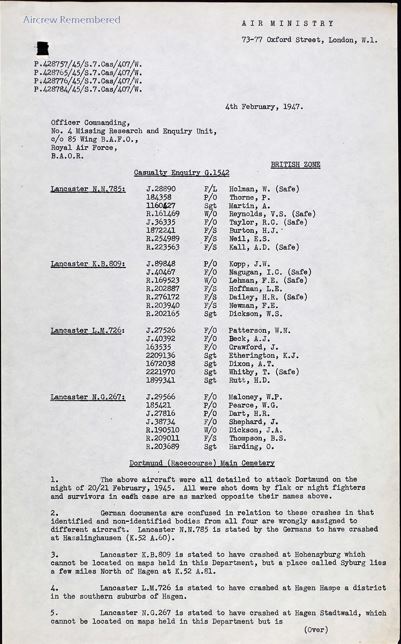
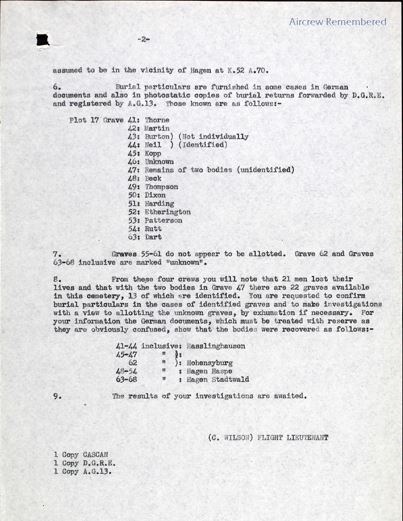
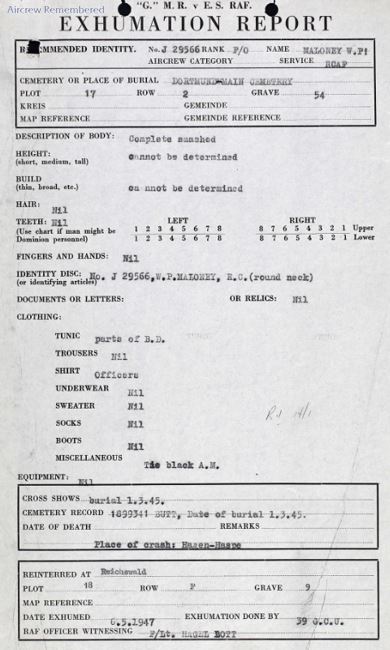
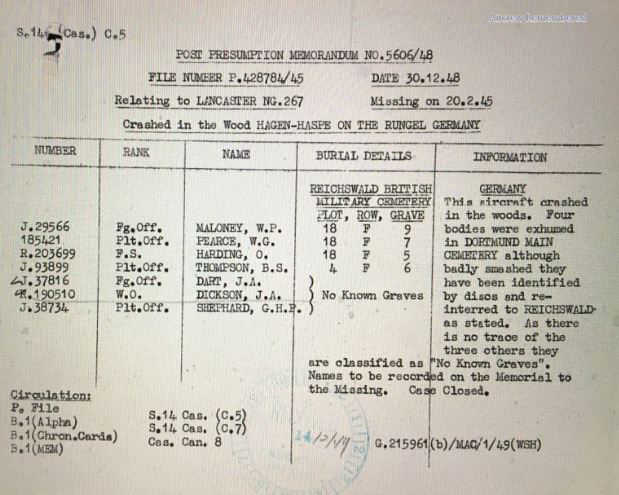
The Post Presumption Memorandum provides the final resolution for the identification and resting places for the crew of NG267 that could be located by the MRES. Unfortunately no traces were found of F/O H.R. Dart, F/O G.H.P. Shepherd and W/O II J.A. Dickson. As a result they have No Known Graves and are commemorated on the Runnymede Memorial.
Letter from R.C.A.F. Casualties Officer to F/O Maloney’s mother providing final closure of her son’s fate and final resting place with three of his crew mates. Dated 23 July, 1948!
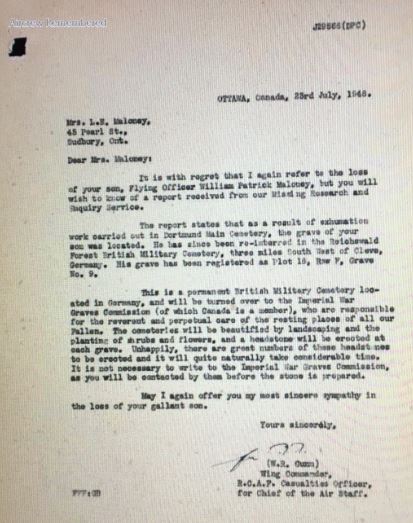
René Schütz and his companions of the Vemisstenforshung (Research for the Missing) in Germany note that the crash site of NG267 had been archaeologically examined. He is in contact with the archaeologist and hopefully can provide the location of the crash site and any new additional information that is uncovered in their research.
BIOGRAPHICAL DETAILS OF THE CREW
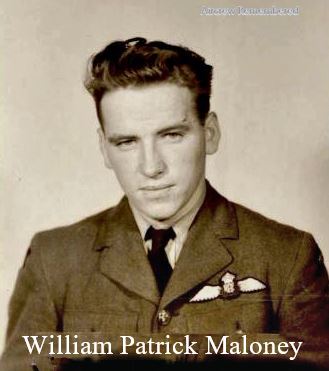
(1) F/O William Patrick Maloney was born on 14 October 1923 in Sudbury, Ontario, Canada to Leo Emmett Maloney and Mary Ethel Hunter. He received his education at St. Thomas School and completed Gr. de XII Ontario (Matriculation). At the time of enlistment he was employed as a machinist apprentice at International Nickel Co.. Athletic interests included hockey, rugby, softball, baseball and basketball.
His preference for Air Force Duty was flying duties. He noted that his brother was in training as a Pilot at Port Hope, Ontario at E.FT.S.
The date of signing his Attestation Paper was August 10, 1942.
DECLARATION MADE BY MAN ON ATTESTATION
Engage in active service anywhere in Canada, and also beyond Canada and overseas, in the Royal Canadian Air Force, for the duration of the present war, and for the period of demobilization thereafter,…
OATH TAKEN BY MAN ON ATTESTATION
I, William Patrick Maloney do sincerely promise and swear (or solemnly declare) that I will be faithful and bear true allegiance to His Majesty.
Date: September 8th, 1942 W.P. Maloney
CERTIFICATION OF ATTESTING OFFICER
The recruit was cautioned that false answers would be liable to be punished as provided by law.
The above questions and answers were then read to the recruit in my presence.
I have taken care that he understands each question, and that his answer to each question has been duly entered as replied to and the said Recruit has made and signed the declaration and taken the oath before me.
North Bay, Ontario this 8th day of September, 1942. Flt/Lt T.G. Holly Officer Commanding. R.C.A.F. Recruiting Centre, North Bay, Ontario.
28. State any employment preference or ambition you may have, other than indicated elsewhere in this form ...TRANS CANADA AIRLINES.
ROYAL CANADIAN AIR FORCE MEDICAL BOARD - held at North Bay Ontario 10/8/42
Nature of Commission: Aircrew ITS (J29566)
Athletics: rugby, hockey, canoeing (shells) swimming.
Head Injury, 1939 K.O. 5 min. blow on forehead, rugby
General Medical and Surgical Examination
(a) Physique: Athletic. (b) Mentality: Standard 1
Height 65", Weight 130 lbs., Complexion fair, eyes hazel, hair brown.
Remarks - Fit
PERSONAL RECORD
TESTS: Good material for Aircrew ITS.
Suitable for Commission - Yes
Recruiting Officer’s Assessment - is a shy immature youth - 'rarin to go', won’t take much to get him to open up. Appears to be energetic and is very keen. Recommend for Aircrew ITS.
Suitable for Commission - Yes
Aircrew ITS STS Sept. 8/1942
General Remarks:
5.1.43 No 1 MSB- Intelligence average; youthful, alert rather tense (tachycardia, cool cyanosed hands, coarse tremor). Personal history negative. Good interest in flying. Confident, sufficiently aggressive; admits to being quick-tempered.
Prefers pilot; bomber 2nd choice.
A.J. Kerwin Flt/Lt
AIRCREW TRAINING
1 Manning Depot, Toronto 8/9/42 - 28/10/42
4 MD Quebec 30/10/42 - 27/12/42
1 ITS Toronto 28/12/42 - 6/3/43
20 EF Oshawa 7/3/43 - 1/5/43
6 SF Drummondville 2/5/43 - 3/9/43
YD Halifax 11/9/43 - 13/10/43
PROMOTIONS
P/O 20/8/43
F/O 20/2/44
OVERSEAS TRAINING
30 OTU 10.5.44 - 18.7.44
An average pilot and captain who experienced no trouble in his conversion. Has shown considerable keeness (sic) and should do well on a squadron.
R.E. Kirkby, W/Cdr.
Advanced Flying Unit 1 Feb.44 - 9 May 44
A pilot of low average ability. He just does what he is told and so far has not shown promise as a leader; this may develop as he realizes his responsibilities.
P.B. Powell, Wing Commander.
AWARDED THE DISTINGUISHED FLYING CROSS promulgated in the London Gazette No. 37049 Dated - 24/4/45
DECORATION FOR PRESS RELEASE
CLASS OF AWARD: Flying Operational Gallantry (In conflict with the enemy)
DECORATION: DFC DATE: 5.4.45
CITATION: 'This officer has completed numerous operations against the enemy in the course of which he has invariably displayed the utmost courage and devotion to duty'
PERSONAL EFFECTS
1 Cranwell
2 New Testaments
1 Book- 'Everywhere.'
1 Book of Scotland
1 Westfield Water-Tight Watch no glass, no hands
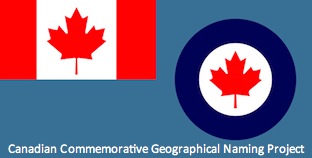
In 1949 the memory of William Patrick Maloney was commemorated by the Province of Ontario with the naming of Maloney Lake in the Iroquois Falls/Cochrane area
(2) P/O. William George Pearce was born on 12 September 1914 at Farringdon, Berkshire the son of George Pearce and Eliza Fanny Pearce nee Stevens. He had two siblings: Frederick Walter Pearce (1919-1996) and Lois Pearce (1925-1996).
He married Elsie May Rowe at Brentford in 1938 and in 1939 they lived at 109 Connell Crescent, Ealing, London. Prior to enlisting William Pearce was a Police Constable

(3) F/O Henry Raymond Dart was born on 15 November 1924 in Toronto, Ontario, Canada to Francis Robert Dart and Anna Mabel Cumming (deceased). He received his education at William Burgess Matric., and East York Coll. Inst. Industrial. At the time of enlistment he was employed as an optical mechanic. Sporting activity included baseball.
At the time of enlistment his age was 17 8/12 years which was below the legal limit of eighteen. This necessitated a letter of permission from his mother to circumvent this restriction.
Attestation Papers signed on July 20, 1942.
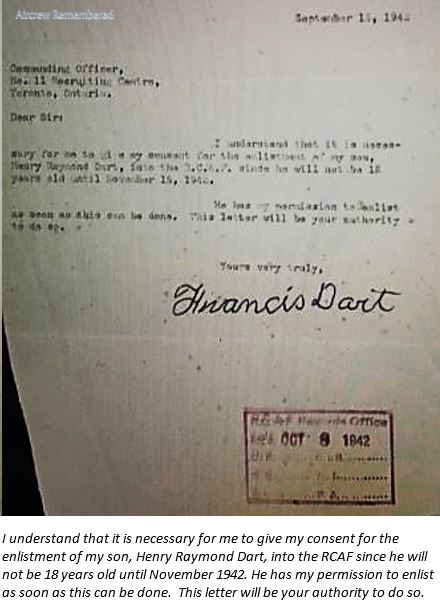
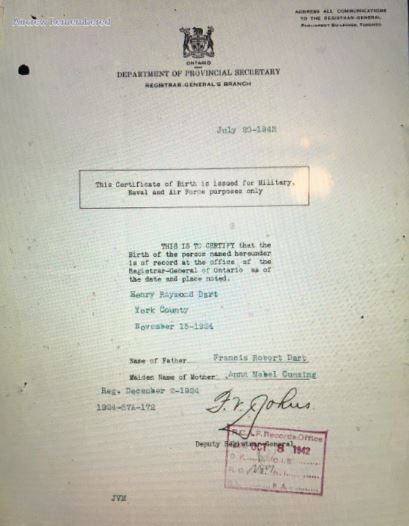
CERTIFICATE OF MEDICAL EXAMINATION: 24/7/42
Height 5' 6 1/2" Weight 113 lbs, Fair complexion, green eyes, fair hair.
PERSONAL RECORD
RECRUITING OFFICER’S ASSESSMENT: Age 17 8/12 yrs., very eager to fly. Smart lad, though seems even younger than his years. Fair appearance. Quite cool and composed. Knows his own mind. Desirable material. Should absorb training readily.
W.D. Gilmore P/O
Commanding Officer
No. 11 Recruiting Centre, RCAF
Toronto, Ontario.
Sept. 14, 1942
AIRCREW TRAINING
Toronto R/C 16/9/42 - 20/12/42
1. MD Toronto 21/12/42 - 5/1/43
8 MD Souris 6/1/43 - 7/3/43
7 BG Paulson 8/3/43 - 20/3/43
7 ITS Saskatoon 21/3/43 - 15/6/43
7 BGS Paulson 16/6/43 - 18/9/43
7 AOSP Portage La Prairie 19/9/43 - 12/11/43
1 'Y' Depot, Halifax 13/11/43 - 29/11/43
PRC
PROMOTIONS
AC2 16/9/42 Aircrew
LAC 28/5/43 Bomber
T/Sgt 29/10/43 AB- Awarded Air Bomber Badge.
P/O 29/10/43
F/O 29/4/44
RCAF TRAINING REPORT
AIR BOMBER
NO. 7 AIR OBSERVER SCHOOL
Course No 85 20/Sept/43- 29/Oct/43
REMARKS: Dart’s pinpointing ability is only air (sic). He worked hard in both ground and air and seemed a little slow and lacking in self confidence. His work improved toward the end of the course. Bomb aiming ability slightly above average.
29/ October/43 Flt/Lt MacLachlan.
ROYAL CANADIAN AIR FORCE
REPORT ON PUPIL
AIR AND GROUND TRAINING
REMARKS: Commission Assessment (revised score): 94
Second Classification: Air Gunner
Immature, borderline material, keen, well motivated, joined at age 17 years. Would say he has plenty of work to do to succeed. Likeable boyish type of Airman.
May 26, 1943 W/C L.C. Russell
PERSONAL EFFECTS
1 Set square in box
1 Piece Perspex
1 Summit fountain pen
1 File
1 Gardening guide
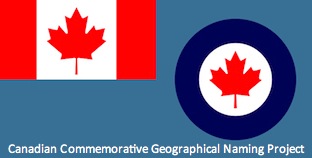
In 1960 the memory of Henry Raymond Dart was commemorated by the Province of Ontario with the naming of Dart Island
www4.rncan.gc.ca/search-place-names/unique/FAVKZ
(4) F/O George Harry Percival Shephard was born on 5 July 1922, in Toronto, Ontario, Canada to Thomas Harry Percival Shepherd and Ethel Miriam Burt (deceased-TBC age 41). He received his education at S.S. Scarboro and Scarboro Coll., 1936- 1941, fifth form. Sporting interests included basketball, soccer and baseball.
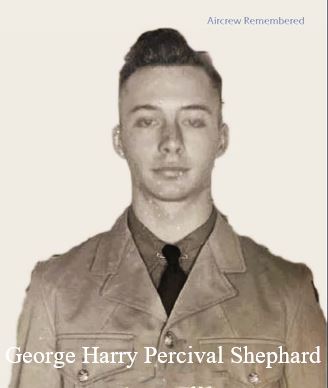 Attestation Papers signed on July 23, 1942
Attestation Papers signed on July 23, 1942
ROYAL CANADIAN AIR FORCE
MEDICAL BOARD: Toronto, Ontario 30/7/42
Height 69 1/2”, weight 135 lbs., blue eyes, brown hair. Fit.
ROYAL CANADIAN AIR FORCE
INTERVIEW REPORT
SELECTION BOARD
General remarks of the Medical Officer on his impressions of the candidate: Average physique. Reticent nervous manner. This man may have a little difficulty in fitting in with the others. Potentially unstable temperament. Poor average air crew material.
G.C. Evans, Flt/Lt. 30/7/42
INTERVIEWING OFFICER: Good average material. A little reserved and uneasy, appears to find interview rather an ordeal. Good appearance, well built, clean cut, nicely dressed. Has played hockey and basketball moderately. Claims wanted to join as aircrew on leaving school but father wanted him to get a start in a job. Appears average material, should develop more confidence in training. Keen to fly.
Suitable for Commission- possibly
M. Powell Flt/Lt.
GENERAL REMARKS BY THE MEDICAL OFFICER ON HIS IMPRESSIONS OF THE CANDIDATE
No. 1 M.S.B. - 10-3-43 - Age 20 years
CHOICE: pilot, navigator
Joined Air Force because he thought that he could do more good than in any other branch of the service. Never flew before enlistment.
No 1 Manning Depot then No. 9 S.F.T.S. orderly room 14 weeks. Tarmac 3 weeks only had 2 rides.
Education: matriculation.
Past employment: Munitions plant 6 months. Insurance Co. clerk one year up until enlisted.
Sports: basketball, likes all sports
Mechanical ability average.
Seems very nervous and fidgety, non-aggressive, more reticent, good motivation, below average flying enthusiasm. Wants to be a fighter pilot, patriotic. If he can overcome his self-consciousness may succeed as a pilot.
(D.H. Stubbs) S/L
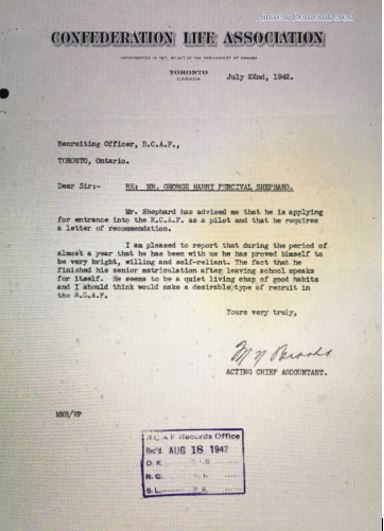
ROYAL CANADIAN AIR FORCE
REPORT ON PUPIL PILOT- FLYING AND GROUND TRAINING
ITS No.1 Course No. 73 22.2.43 - 30.4.43
EFTS Course No. 80 May 3/43-
Dual 14:35 Solo: 15 Link 7:00 Dual to First Solo 10:55
Remark: ITS - A quiet, unassuming airman. Inclined to go un-noticed at first. Showed steady improvement in both work and initiative during his course.
Second Aircrew Recommendation: Air Bomber
R.N. Chandler S/L
EFTS - This student failed to progress sufficiently for the amount of dual. He soloed but could not be allowed to go solo again. He was slow to react on landings, approaches - judgement of height and distance poor.
S/L Carscadden CFI
No. 20 EFTS
Decision of Selection Board: Remuster to Air Navigator
While this Airman’s marks in navigation were below standard at ITS, he obtained perfect marks in two progress tests here, and 77% on an entrance exam.
Remuster to Navigator seems justified in view of this and the fact that he likes Navigation.
Flying Instructor’s Remarks: This student is nervous in the circuit. Has a strong tendency to freeze on controls, when landing and after landing. Goes into turns fairly well, but when recovering fails to centralize rudder, causing skidding on nearly all turns. Repeats mistakes regardless of corrective instructions.
ESFI's Remarks:
Development of air sense and judgment below average. Approaches to land from gliding turns are dangerous to himself and other aircraft. Would take another hour on air work and at least an hour on landings to solo. Progress would be too slow throughout all subsequent exercises to graduate.
CGI's Remarks: Average student in ground school.
RCAF TRAINING REPORT
NAVIGATOR
No. 1 AIR OBSERVER SCHOOL
Course No. 80 NAV 12/July/43 - 26/Nov./43
Remarks: Passed
Nov.23/43 S/L Officer Commanding
RAF - TRAINING REPORT
NAVIGATOR
NO. 1 (O) A.F.U.
Course No. 226 5.4.44- 8.3.44
Remarks: A capable navigator - conscientious and hard working.
9.5.44 J. MacKenzie S/L Commanding Officer
RAF
FINAL TRAINING REPORT NAVIGATORS
No. 30 O.T.U. 9.5.44- 18.7.44 Final 82%
NAVIGATION OFFICER’S REMARKS: A sound average Navigator who has worked hard.
S. Snowden S/L Station Navigation Officer
25 July 1944
RECORD OF SERVICE AIRMEN
R/C Toronto 5/8/42
Toronto 30/8/42
1 M.D. Toronto 31/8/42 - 23/10/42
9 SFTS Exeter 24/10/42
9 SF Centralia 20/2/43
1 ITS Toronto 21/2/43 - 1/5/43
20 EFTS Oshawa 2/5/43 - 7/6/43
1. MD Toronto 8/6/43 - 10/7/43
1 AOS Malton 11/7/43 - 10/12/43
1 YD Halifax 11/12/43 - 18/1/44
2 AGTS Quebec 15/1/44 - 11/2/44
1 Y Depot Lachine 19/2/44 - 5/3/44
Embark Halifax 5/3/44
Disembark U.K. 14/3/44
UK
18G 3 RCAF 15/3/44
3 PRC to 1 (o) AFU 4/4/44
30 OTU 9/5/44
11 Base 29/7/44
625 Squadron 29/9/44
RANK
AC2 5/8/42 Aircrew ITS
LAC 30/4/43 Pilot 'STD'
T/Sgt 26/11/43 Prom. NAVIGATOR
Commission and Air Navigator’s Badge 26/11/43
TFO 26/5/44
PERSONAL EFFECTS:
1 Book- 'Munich Before and After'
2 Dictionaries
2 containers of leads and pencils
12 pencils
4 Erasers
1 Money Belt
28 Handkerchiefs
3 Odd Socks
1 Silver shoe mascot
(5) WO II John Arthur Dickson was born on 7 January 1923 in Kingston, Ontario, Canada to George Dickson (Civil Servant) and Hildred Blanche Sears. He received his education, General at MacDonald and Matric., at Kingston High. At the time of enlistment he was employed as a munitions worker at Dominion Bridge Co., Toronto. His sporting activities included hockey, track and field and softball.
At this time he was married to Marjorie Sarah Dickson and had a son, Gill Arthur Dickson, DOB February 20, 1942.
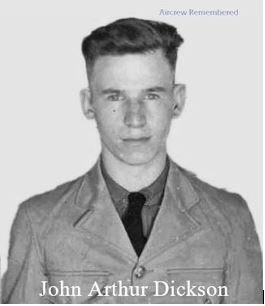
Attestation Papers signed on August 27, 1942
ROYAL CANADIAN AIR FORCE
MEDICAL BOARD, Toronto, Ontario 27/8/42
CERTIFICATE OF MEDICAL EXAMINATION Aug. 27, 1942
Height 5' 5 1/2" Weight 132 lbs Medium complexion, blue eyes, dark brown hair.
GENERAL REMARKS BY THE MEDICAL OFFICER ON HIS IMPRESSIONS:
Quiet, aggressive type of lad. Alert and keen. Seems happy and contented. Has wife and child and is only 19 years of age. Wife is taking it in good part. Polite and already has a military attitude. Good material.
B. McKone Flt/Lt. 27/8/42
ROYAL CANADIAN AIR FORCE
INTERVIEW REPORT SELECTION BOARD27-8-42
MEDICAL OFFICER ASSESSMENT:
Keen, alert, aggressive, quiet, steady, polite and already has military attitude.
Suitable for Commission: Yes, with training.
B. McKone Flt/Lt. 27-8-42
INTERVIEWING OFFICER ASSESSMENT:
Desirable sort of lad, age 19, worked as a machinist for 3 years, medium build, rugged, neat, clean cut, anxious to serve R.C.A.F. and get going at once. Good average material for W.S.
Recommend for Aircrew (W.S.).
F. McRae F/O
RECORDS OF SERVICE AIRMEN
1 MD Toronto 31/8/42 - 23/10/42
14 SFTS Aylmer 24/10/42 - 27/12/42
4 WS Guelph 28/12/42 - 9/7/43
1 BGS Jarvis, Ont. 10/7/43 - 29/8/43
1 AOS Malton 30/8/43 - 24/2/44
1 YD Lachine 25/2/44 - 25/2/44
3 AGTS Three Rivers 26/2/44 - 14/3/44
1 Y Depot Lachine 15/3/44 - 25/3/44
ROYAL AIR FORCE
AIRMAN’S RECORD SHEET (ACTIVE SERVICE)
1 Y Depot 15.3.44
UK 25.3.44
Emb. Halifax 25.3.44
UK 2.4.44
3 RCAF.PRC 3.4.44
3 (O) HFU 11.4.44
30 OTU 9.5.44
11 Base 29.7.44
625 Squadron 29.9.44
RCAF UK N/E Unit 21.2.45
RANK
AC2 31/8/42
LAC 28/1/43
T/Sgt 23/8/43
T/F/Sgt 23/5/44
T/W/O II 23/11/44
Awarded W/Op Badge 12/7/43
Awarded Air Gunners Badge 23/8/43
RCAF TRAINING REPORT
WIRELESS OPERATOR (AIR GUNNER) AND AIR GUNNER
1 BOMBING AND GUNNERY SCHOOL
Course No. 59 12 July/43- 23 Aug/43
REMARKS: Good capable student.
(A.D. Bell-Irving) Group Captain 22 Aug/43
ROYAL CANADIAN AIR FORCE
REPORT ON PUPIL WIRELESS OPERATOR (AIR GUNNER)
4 WIRELESS SCHOOL
Course No. 59 9/7/43- 21/12/43
Assessment of Air Operator: Above Average.
Date authorized to wear Wireless Operator’s Badge 9/7/43 (86.4% Pass)
S/L Officer Commanding
4 Wireless School
RAF - TRAINING REPORT
ADVANCED W/T (PRE-O.T.U.) COURSE
Course No. 210 12.4.44 - 8.5.44
Remarks: A fair wireless operator who should improve with experience.
RAF - TRAINING REPORT
WIRELESS OPERATOR/ AIR GUNNER
30 OTU
Course No. 41 10.5.44 - 18.7.44
Remarks: Keen average operator.
25 July, 1944 R.A.C. Barclay G/Capt.
PERSONAL EFFECTS
1 pr. skating boots with skates
1 rabbit's foot
1 ruler 12" wood
1 horse racing game
5 assorted books
1 Gospel of St. John
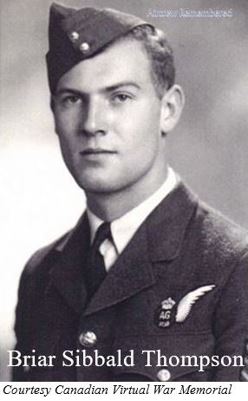
(6) P/O Briar Sibbald Thompson was born on 17 July 1923 at Jacksons Point, Ontario, Canada to Harry Thompson and Ada Louisa Thompson. Jacksons Point is located on the south shore of Lake Simcoe. He received his general education at Sutton Public School and Sutton Continuation and Industrial at Central Tech., Toronto. At the time of enlistment he was employed as paint sprayer at Moffats, Weston, Ontario. His sporting activities included hockey, golf, basketball and baseball.
On enlistment he initially requested Ground Duties for Air Force Duty.
Attestation Papers signed on October, 28, 1942
ROYAL CANADIAN AIR FORCE
MEDICAL BOARD R.C.A.F. SUMMERSIDE P.E.I. 7/APR 43
Athletic, Height 72" Weight 178 lbs Complexion fair, eyes blue, hair brown.
GENERAL REMARKS BY THE MEDCAL OFFICER ON HIS IMPRESSIONS OF THE CANDIDATE:
Large frame, well muscled chap of average intelligence. All tests satisfactory.
H.E. Hanna, S/L
ROYAL CANADIAN AIR FORCE
RECOMMENDATION FOR REMUSTERING FOR AIRCREW
REMARKS: Wishes to be pilot if possible. Taking education course at unit. Good progress. Excellent type for Aircrew. Co-operative and humorous.
C.L. Kerr P/O
MEDICAL OFFICER:
Large frame, well muscled type of average intelligence. Fair Aircrew material.
S/L Hanna M.O.
7 Apr. 43
INTERVIEW REPORT
AIRCREW
Candidate has had a good bit of manual and mechanical training which should help him in aircrew duties. Completed C.L.E.S. Course (Preparatory for Aircrew)
Recommend for Aircrew (W.S.)
Apr 15/1943 (W.V. Lewis) Sergeant
INTERVIEWING OFFICER
Nice appearance. Good manner. Been in RCAF for 5 months. Originally applied for Aircrew, but when told would only become A.G. took G.D. Now prepared to accept Aircrew Selection and advised that C.T. would indicate he would become W.A.G. Quite satisfied. C.A.T. test is O.K. Seems sincere type. Hoped to become a pilot, but willing to serve as required. Looks like good material.
Recommend Aircrew (W.S.)
Suitable for Commission: Quite possibly.
Apr 15/1943P/O E.B. Fitzgerald
RECORD OF SERVICE AIRMEN
Toronto RC 24/11/42
11 R/C Toronto 2/12/42
5 'M'D Lachine 2/12/42 - 14/1/43
1 GRS Summerside P.E.I.15/1/43 - 16/7/43
5 MD Lachine 17/7/43 - 1/8/43
1 MD Toronto 2/8/43 - 9/8/43
23 PAE Toronto 11/8/43 - 14/9/43
1 SFTS Camp Borden 15/9/43 - 15/10/43
10 BGS Mt. Pleasant 16/10/43- 30/1/44
3 AGS Three Rivers 31/1/44- 28/2/44
1 YD Lachine 29/2/44- 30/3/44
RANK
AC2 24/11/42
AC1 24/2/43
LAC 24/5/43
T/Sgt 14/1/44
T/F/Sgt 14/10/44
P/O 2/2/45
RAF
AIRMAN’S RECORD SHEET (ACTIVE SERVICE)
No 1 Y Depot U.K. 30.3.44
Emb. Halifax 3.3.44
Disem. UK 7.4.44
No. 3 RCAF PRC 8.4.44
30 OTU 9.5.44
11 Base 27.7.44
625 Squadron 29.9.44
Discharged on Appointment to Commission on 2.2.45
RCAF TRAINING REPORT
WIRELESS OPERATOR (AIR GUNNER) AND AIR GUNNER
10 BOMBING AND GUNNERY SCHOOL
Course No 68 18.10.43- 14.1.44
Remarks: Good worker. Attentive and alert.
Officer Commanding
10 Bombing & Gunnery School
RAF - TRAINING REPORT
AIR GUNNER
3O OTU
Course No. 41 10.5.44- 18.7.44
Remarks: Good in theory and as Fighting Controller. Has worked very hard, both on the ground and in the air, proving himself to be an example to his fellow pupils.
25 Jul 1944
R.A.C. Barclay Officer Commanding
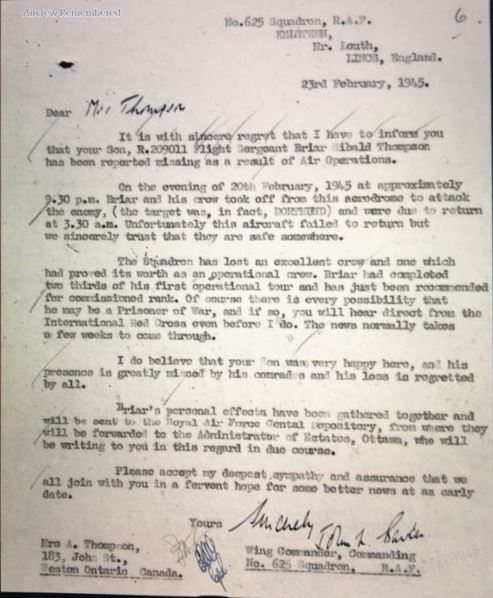
No. 625 SQUADRON RAF
Dear Mrs. Thompson 23rd February, 1945.
'The Squadron had lost an excellent crew and one which had proved its worth as an operational crew. Briar had completed two thirds of his first operational tour and has been recommended for Commissioned Rank. Of course there is every possibility that he may be a Prisoner of War, and if so, you will hear from the International Red Cross before I do. The news normally takes a few weeks to come through.
I do believe that your Son was very happy here, and his presence is greatly missed by his comrades and his loss is regretted by all…'
Yours Sincerely, John Barker,
Wing Commander, Commanding
No. 625 Squadron.
PERSONAL EFFECTS
1 net table tennis
1 New Testament
1 odd glove black leather
1pr bathing trunks
1 London guide

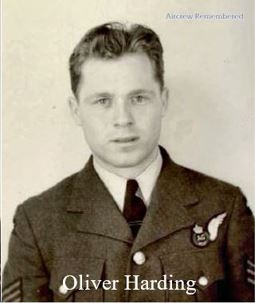
(7) F/Sgt Oliver Harding was born on 7 January 1925 at Hodgeville, Saskatchewan, Canada to John Harding and Jennie Burton. Hodgeville is a farming community between Swift Current and Moose Jaw, twenty kilometres south of the Trans-Canada highway. Oliver received grade eight education at the community school and then worked on the family farm until enlisting in the R.C.A.F. in 1942. His sporting activities included hockey (extensively) and baseball (moderately). School teams, keenly interested. Hobbies: stamp collecting.
Attestation Papers signed on November 19, 1942.
ROYAL CANADIAN AIR FORCE
MEDICAL BOARD 5 R.C. Regina23/11/42
MEDICAL HISTORY
Height 5' 8 1/2". Weight 140 lbs. Age 17 3/4 years. Complexion medium, eyes blue, hair brown.
PERSONAL RECORD25/11/42
Young, a trifle unruly, consider him to be confident, better at mechanics than theoretical, consider him A.G. material.
Flt/Lt. ?
INTERVIEWING OFFICERS ASSESSMENT:
Young lad, slightly immature; alert, eager to qualify for Aircrew duties. Should develop into good Aircrew material.
Recommend for: STD Aircrew.
FINDINGS OF THE A.C.S.B. AS IN ACCORDANCE WITH THEIR CATEGORIZATION
Tight lipped - determined strong willed farm lad. Sturdy build - Has been around- Good hockey player - Solid and not easily distarted (sic). Fair air gunner with training. Attitude. Eager. Confidence. Sufficient self-assurance.
M. Brock Flt/Lt.
Selecting Officer
5.3.43
RECORD OF SERVICE AIRMEN
RC Regina 25/11/42
5 RC Regina 1/3/43
No 2 MD Brandon, Man. 2/3/43 - 16/4/43
No 8 RD Winnipeg 16/4/43 - 27/6/43
4 WS Guelph, Ont. 28/7/43 - 12/8/43
1 SFTS Camp Borden 13/8/43 - 17/9/43
10 BGS Mount Pleasant 18/9/43 - 30/1/44
3 ABTS Three Rivers 31/1/44 - 28/2/44
1Y Lachine 29/2/44 - 30/3/44
3 PRC
RAF
AIRMEN’S RECORD SHEET
1 Y Depot 28.2.44
UK 30.3.44
Emb. Halifax 30.3.44
Disem. U.K. 7.4.44
3 RCAF PRC 8.4.44
30 OTU 9.5.44
11 Base 29.7.44
625 Squadron 29.9.44
PROMOTIONS
AC2 25.11.42 Aircrew STD
AC2 5.3.43 Air Gunner STD
LAC 29.11.43 Ditto
T/Sgt 14.1.44 Ditto Sp.
T/Sgt 14.1.44 Ditto Gp. 2
T/F/Sgt 14.10.44
RCAF TRAINING RECORD
WIRELESS OPERATOR (AIR GUNNER) AND AIR GUNNER
10 BOMBING AND GUNNERY SCHOOL
Course No 68 4/10/43- 14/1/44
Remarks: Average type. Not officer material
14/1/44 O/C No 10 Bombing & Gunnery School
RAF - TRAINING REPORT
AIR GUNNER
30 OPERATIONAL TRAINING UNIT
Course No 4110/5/44- 10/7/44
Remarks: Good in theory and as Fighting Controller has shown a great aptitude for his work. A good reliable type.
It is noteworthy that P/O Thompson and F/Sgt Harding attended the same RAF gunnery school. It is apparent that they matured and gelled as a formidable gunnery team in the process. This would quite likely prove to be a catalyst for the ultimate outcome of the crewing up process and the survival potential of their crew. See Crewing Up process in archive report for NG240.
SERVICE CONDUCT SHEET
One can only imagine what mischief an athletic, handsome young airman could be up to for four hours and twenty-five minutes in the early morning hours of Mount Pleasant, Prince Edward Island!
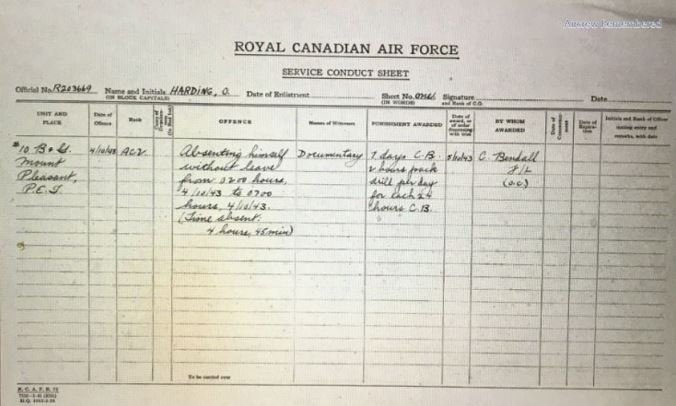
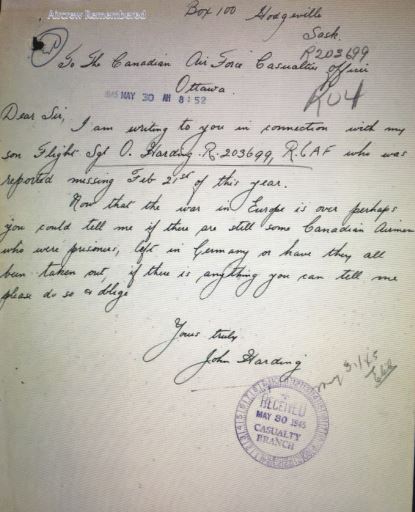

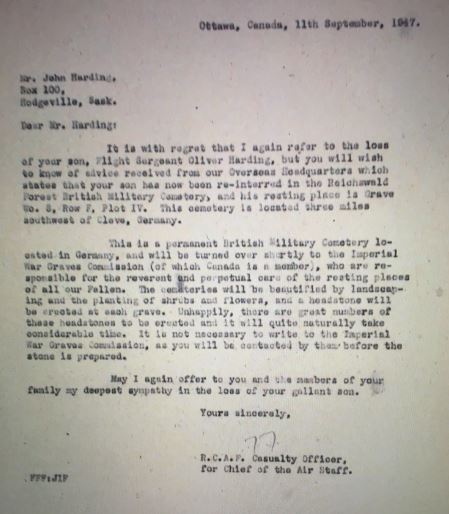
These letters illustrate the grief and frustration when next of kin are unable to ascertain the fate of a son who was reported as missing after air operations against the enemy and then there is no closure regarding the final outcome — on occasion for years after war’s end. On rare occasions crews are classified as lost without a trace (LWT) and remain so to date. Two 625 Squadron aircrew fit into this category: Loss No. 10 - DV364, F/Lt. G.A. Spark and crew and Loss No. 53- PB531 F/O O.H. Morshead and crew.
PERSONAL EFFECTS
1 New Testament
1 sports jersey
2 boxes of flints
1 broken comb
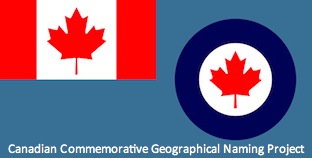
The memory of Oliver Harding was commemorated by the Province of Saskatchewan with the naming of Harding Bay
www4.rncan.gc.ca/search-place-names/unique/HAEMI
BURIAL DETAILS, MEMORIALS AND EPITAPHS
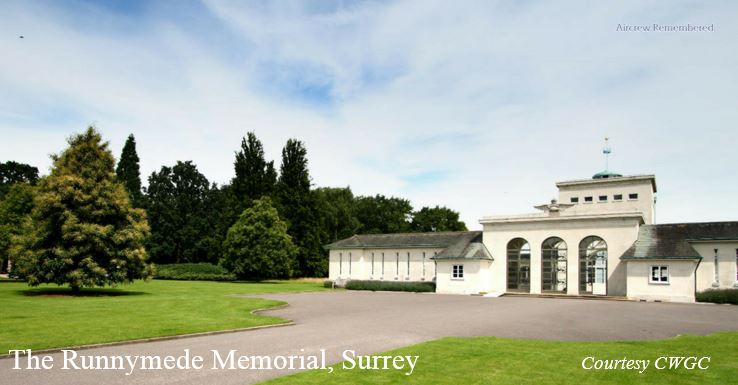
(1) F/O William Patrick Maloney was originally buried at the Dortmund Main Cemetery and on 6 May 1947 re-interred at the Reichswald Forest War Cemetery - Plot 18 Row F Grave 9
His epitaph reads
Rest in peace
(2) P/O William George Pearce was originally buried at the Dortmund Main Cemetery and on 6 May 1947 re-interred at the Reichswald Forest War Cemetery - Plot 18 Row F Grave 7
(3) F/O Henry Raymond Dart is commemorated at the Runnymede Memorial - Panel 279
(4) F/O George Harry Percival Shepherd is commemorated at the Runnymede Memorial -Panel 280
(5) W/O II John Arthur Dickson is commemorated at the Runnymede Memorial - Panel 281
(6) P/O Briar Sibbald Thompson was originally buried at the Dortmund Main Cemetery and on 13 December 1946 re-interred at the Reichswald Forest War Cemetery - Plot 4 Row F Grave 6
His epitaph reads
I’ve found
The one eternal thing
Which carries on
When earth is through
(7) F/Sgt Oliver Harding was originally buried at the Dortmund Main Cemetery and on 6 May 1947 re-interred at the Reichswald Forest War Cemetery - Plot 18 Row F Grave 5
His epitaph reads
A beloved son,
Born at Hodgeville, Canada.
He gave his life for peace
'Resting'
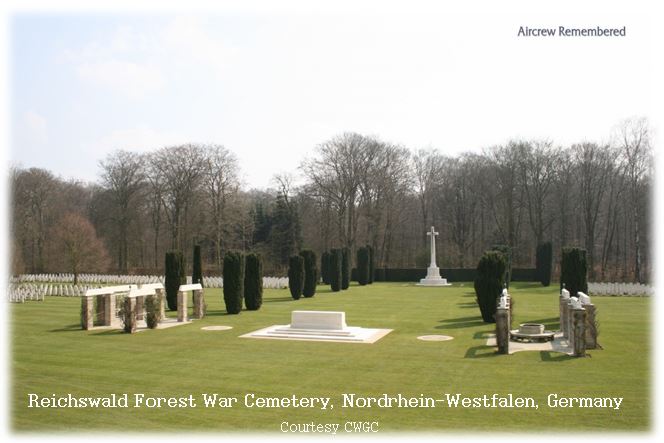
DECORATION SUGGESTIONS
(1) J29566 F/O Walter Patrick Maloney: Bar to DFC, KIA
(2) 185421 P/O William George Pearce: DFC, KIA
(3) J37816 F/O Henry Raymond Dart: DFC, KIA
(4) J38734 F/O George Harry Percival Shepherd: DFC, KIA
(5) R190510 W/O II John Arthur Dickson: DFM, KIA
(6) J93899 P/O Briar Sibbald: DFC, KIA
(7) R203699 F/Sgt Oliver Harding: DFM, KIA
AUTHOR’S NOTES:
During eighteen months of conflict with the enemy 625 Squadron would pay the price of having seventy four aircraft and crews failing to return. Forty of these losses (54%) would cost all seven, and on one occasion eight (LM512, F/O. Howard N. Cornish and crew http://aircrewremembered.com/cornish-howard.html) their lives. One can be quite certain that the statistical losses of other heavy bomber squadrons would have been similar in magnitude. This meant that the majority of Bomber Command aircrew died traumatically, either from an explosive destruction of their aircraft by night fighter, flak or mid-air collision or in their mangled aircraft trapped by centrifugal forces with time to contemplate the final moments of their young lives. In the latter case there would be time to send a telepathic farewell to family and ponder the years not to be.
The loss of NG267 and her crew is symbolic and has been chosen in order to exemplify the forces that would bring seven young men, strangers to each other, together from different walks of life and mould them into a combat team, to face the grim tasks at hand. Keeping in mind that although this is a predominately Canadian crew, that they could have been British, Australian, New Zealanders or a Commonwealth mix. The common contributing factors are the rigid selection and training processes that taught them the skills of their trades. Perhaps more important was the ingenious concept of the informal ritual of 'Crewing Up' that would result in a seven man crew melded into a cohesive unit focused on living, fighting and if necessary dying together. One can only imagine the fatality rates if any other method of crew formation was contemplated. Fatality rates would have been as high as 80-90% and Lack of Moral Fibre during the years of heavy losses would have soared.
It is interesting to observe the diverse crew backgrounds of NG267 mature with each operation. It is not surprising that they managed complete two thirds of their tour before they were caught at the wrong place at the wrong time. Their catastrophic demise epitomizes the final moments of the majority of Bomber Command crews that failed to return. It is noteworthy that returning crews would refer to the witnessed vivid explosions as 'Scarecrow Shells', a term introduced by senior staff to reduce aircrew anxiety during times of heavy losses. However, after several raids of heavy losses in moonlight, it became obvious to surviving crews that reality trumped fiction. Empty mess hall seats spoke the truth.
One has to be impressed with the patriotism and Commonwealth loyalty displayed by these young men and two boys who elected to abandon their youth and volunteer for a just cause. With this commitment they trained for a purpose and sailed overseas, infested with U-boats, to enter the cauldron of war that included horror beyond their imaginations. Despite this, without hesitation, they would repeatedly comply with the Battle Orders to return to the fray to ensure the war was won. In their minds there was no doubt that they would be returning to home and families.
We may never know the cause for the loss of NG267 — night fighter or flak. A direct hit by radar guided flak to fuel tanks or the bomb load is a definite possibility. On the bomb run it is difficult to envision a night fighter evading the focused scan of a pair of experienced gunners.
The end came suddenly for this young crew and it is most unlikely that they suffered. It is difficult to accept that these seven young souls would not survive to experience the full potential of their lives. Lest we forget.
Personal effects provide a window into the psyche and souls of these young airmen. It was interesting to note that NG 267’s navigator was reading, 'Munich Before and After'. One can only wonder if this was the first time that W/O II Dickson forgot his lucky rabbit’s foot. Was F/O Dart’s piece of Perspex a memento from a prior flak encounter?
JEA.
REFERENCES
1. 625 Squadron ORB
2. Library and Archives Canada: Canada, WWII Service Files of War Dead, 1939- 1947
3. Nachtjagd War Dairies: Volume Two April 1944- May 1945, Theo Boiten and Rod MacKenzie
4. The Bomber Command War Diaries, Martin Middlebrook and Chris Everitt
5. Flying in Defiance of the Reich, Squadron Leader Peter Russell DFC
PHOTO CREDITS, DOCUMENTS
1. Library and Archives Canada
Letters and Documents
Photos: 625 Squadron Aircrew and Gravesite Photos and Documents May 2017
(1) F/O William Patrick Maloney DFC, R184199/J29566, p. 197 RG24 28175
(3) F/O Henry Raymond Dart, A193533/J37816, p. 338 RG24 25162
(4) F/O George Harry Percival Shephard, R184519/J38734 p. 300 RG24 28634
(5) W/O II John Arthur Dickson, R190510 p. 3 RG24 25209
(7) Sgt. Oliver Harding, R203699 p. 393 RG24 27686
2. Flying in Defiance of the Reich, Squadron Leader Peter Russell DFC
Submission by Jack Albrecht and Nic Lewis
Co-authors:
John Naylor
Maureen Hicks
Reg Price
Mike Edwards
Roy Wilcock (Aircrew Remembered)
Note: I am most grateful to co-author, Maureen Hicks, whose feedback, comments and insight provided the germination for this archive report.